The Best Bodyweight Workout for Men Over 50, According to Trainers
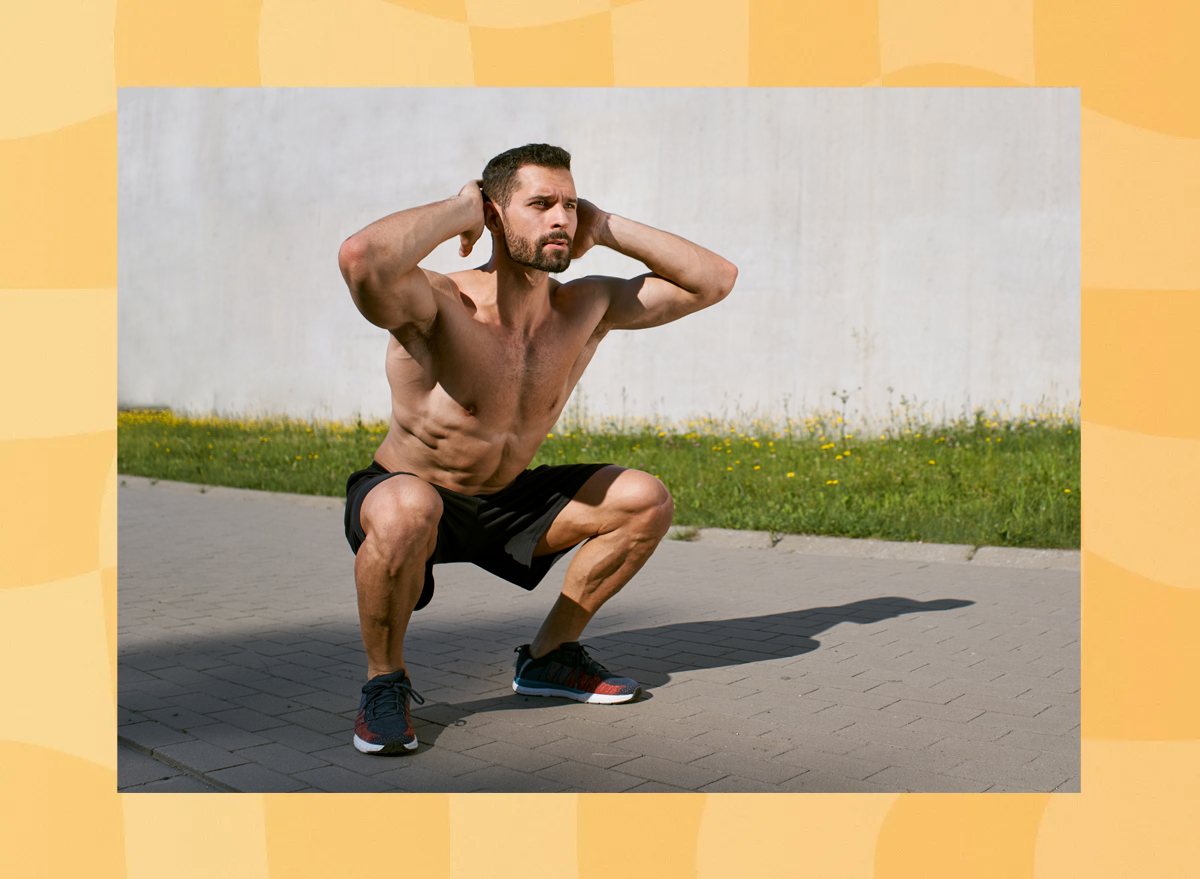
If you’re a man in your 50s and want to stay healthy and independent as long as possible, then you need to make maintaining strength, mobility, and balance your top priority. While aging brings a natural decline in muscle mass and joint function, staying active with regular exercise can help you combat these changes and improve quality of life as you age.
But with all the conflicting info online, determining which workouts are best for middle-aged men can be confusing. Fortunately, ETNT is here to help. Bodyweight exercises (like push-ups, air squats, and pull-ups) are perfect for guys in their 50s and beyond as they’re easier on the joints and can be just as effective as free weights for helping to hold on to muscle mass as you get older. Plus, they require no equipment and can be performed anywhere, making them an excellent choice for men over 50 who want to stay fit and strong.
We chatted with Meg Anderson, CPT, an NASM-certified personal trainer and founder of Pink & Powerful, who delivers the best bodyweight workout for men over 50, designed with the unique needs of the aging male body in mind. Read on for the workout and detailed instructions, then be sure to check out The 15-Minute Bodyweight Workout That Replaces an Hour at the Gym.
How The Workout Works:
You can approach this workout in one of two ways: complete all sets of each exercise before moving on, or perform it as a circuit. For the circuit option, cycle through each exercise once, rest for 30 to 60 seconds between exercises, and take a one to two-minute break between rounds. Aim to complete two to three rounds total.
Bodyweight Squats
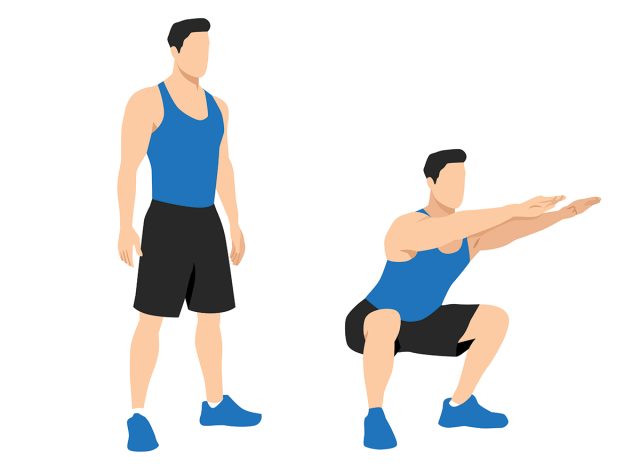
Squats are a foundational compound movement that strengthens your glutes, quads, and hamstrings. These muscles are crucial for maintaining knee health and daily functional movements, like getting in and out of a chair or climbing stairs. As men age, hip mobility naturally declines, but squats help maintain this mobility while boosting overall strength.
How to do it:
- Stand with your feet shoulder-width apart with your chest up.
- Lower your hips back and down as though you’re sitting into a chair, keeping your knees in line with your toes.
- Press through your heels to return to standing.
- Complete two or three sets of 10 to 15 reps.
Trainer Tip:
Maintain excellent posture throughout the movement by keeping your chest lifted and your back straight to avoid lower-back strain.
Incline Push-Ups on a Wall or Bench
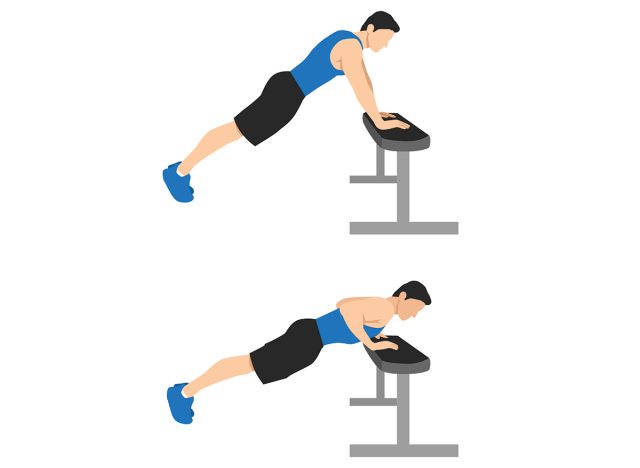
If you’re not a fan of traditional push-ups, the incline push-up is a fantastic variation as it’s much easier on the shoulders and wrists while still targeting the chest, shoulders, and triceps, all of which are essential muscles in maintaining upper body strength.
How to do it:
- Place your hands shoulder-width apart on a wall or bench.
- Step your feet back so your body forms a straight line.
- Lower your chest toward the wall or bench while keeping your elbows at a 45-degree angle.
- Push back to the start position.
- Perform two or three sets of 8 to 12 reps.
Trainer Tip:
If you’re new to push-ups or recovering from an injury, the incline variation is much more accessible and less likely to strain your shoulders.
Glute Bridges
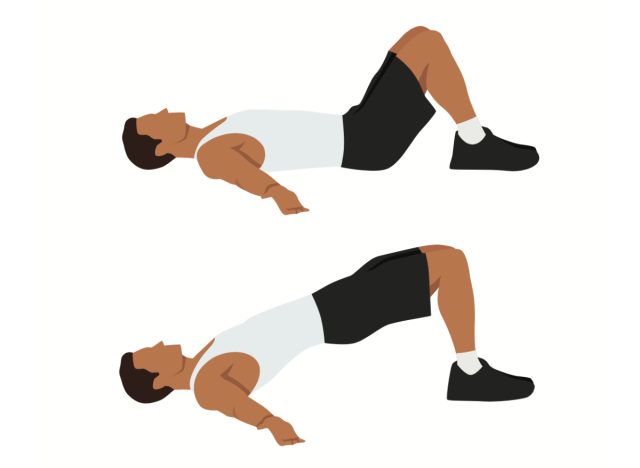
Glute bridges are essential for strengthening your glutes and hamstrings, which research says can help reduce lower back pain and prevent the stiffness that comes from prolonged sitting. As you age, you tend to spend more time seated, and this move can help counteract those effects by engaging your posterior chain (backside).
How to do it:
- Lie on your back with your knees bent and feet flat on the floor.
- Engage your core, press through your heels, and lift your hips toward the ceiling.
- Squeeze your glutes at the top and then slowly lower your hips back down.
- Aim for two or three sets of 10 to 15 reps.
Trainer Tip:
Keep your core tight and avoid arching your lower back as you lift your hips.
Bird-Dogs
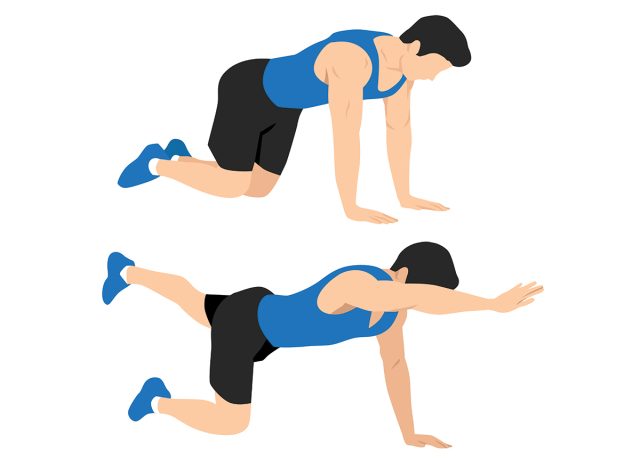
Bird-dogs are a core-strengthening exercise that also improves stability, balance, and spinal alignment, helping to prevent falls, which is incredibly important as you age.
How to do it:
- Get on all fours with your hands under your shoulders and knees under your hips.
- Extend your right arm forward and your left leg back while keeping your hips and shoulders level.
- Hold for one to two seconds before returning to the center and switching sides.
- Do two or three sets of 8 to 10 reps per side.
Trainer Tip:
Avoid letting your lower back sag during the movement.
Forearm or Knee Planks
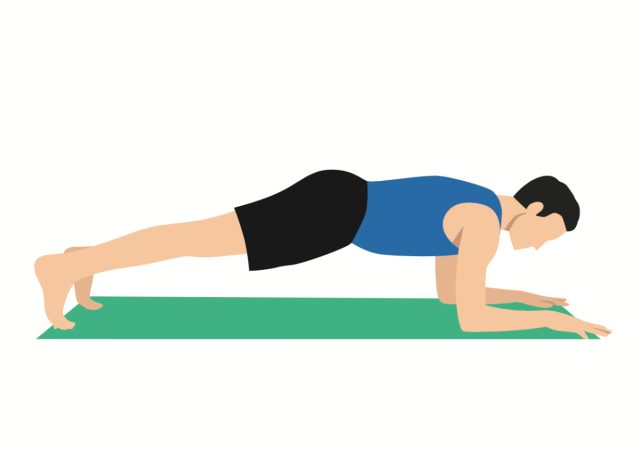
Studies show that planks are one of the best exercises for strengthening your entire core, including deep stabilizing muscles that protect your spine.
How to do it:
- Place your forearms on the floor with your elbows directly under your shoulders.
- Extend your legs straight behind you or drop to your knees for a modified version.
- Keep your hips level and your core tight.
- Avoid any sagging in your back.
- Perform two or three sets of 20 to 30-second plank holds.
Trainer Tip:
If you’re new to planks, start with the modified knee version and gradually work up to the full plank. Make sure to keep your body as straight as possible the entire time.